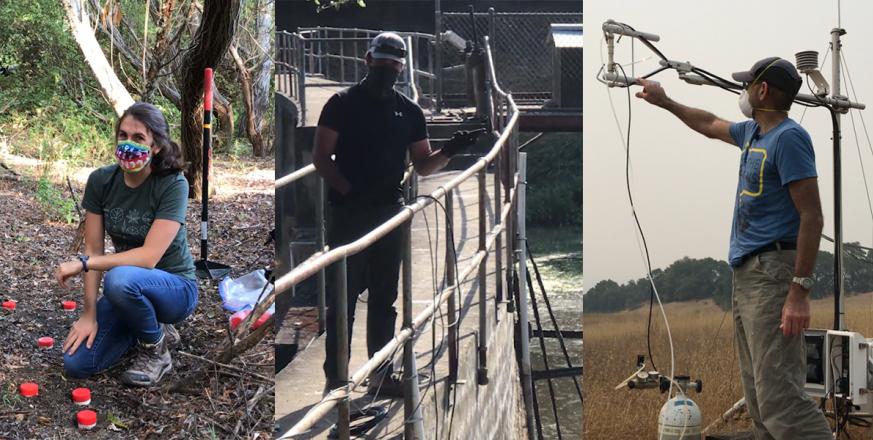Research Recovery at Jasper Ridge

Research at Jasper Ridge has re-started—gradually, and subject to painstaking review by Stanford’s Field Research Working Group. To be eligible to re-start, studies must be long-term or have completed all exploratory work prior to March; researchers must be located in Northern California; and their visits must receive approval from the Working Group and their department chair. The Working Group evaluates proposals based on whether the activities are essential and whether the researchers can employ stringent COVID-19 prevention practices. So far, a half dozen in-person research activities have been approved; several more projects can enter later this month; and Jasper Ridge staff have been permitted to pinch-hit for some researchers who reside outside northern California (and otherwise would have to quarantine for two weeks before entering).
Here is a sampling of research activity the Working Group has permitted, together with some short, impromptu video clips in which researchers Emily Lacroix, John Hardy, and Chris Field each took a few minutes to explain what they’re doing and why. All researchers have worn face coverings consistently while working in the field, and maintained physical distancing.
Emily Lacroix, a Stanford PhD candidate in Earth Systems Science, applied to collect soil cores from the margin of Searsville Reservoir in order to repeat her July 2019 work at the same site. For her study, which focuses on how carbon is stored in or released from soils, it was essential that the site and the time of year be fixed. Another important element of her proposal was that she had received permission to resume work in the lab on campus where she processes her soil cores. In this video, Emily explains how cores from the lake margin are important to her research.
John Hardy, a hydrologist at Balance Hydrologics, Inc., needed to do essential maintenance on sensors that track the water level in Searsville Reservoir and its chemistry. The year’s low rainfall reduced inflow to the reservoir during summer, at the same time that water diversion from the reservoir was continuing. As a result, the water level in the reservoir dropped below the sensors, and John needed to lower the sensors into the water and reference their position. He also performed essential maintenance on stations that monitor Bear Creek and the creek below the dam. In this video, John describes the sensors in the reservoir.
Chris Field, a professor in Biology and in Earth Systems Science, has a monitoring station (an “eddy flux” station) on the ridge top that tracks the exchange of CO2 and water vapor between the grassland and the atmosphere. Chris monitors the station via the internet, and found that he needed to recalibrate the instrument that measures the concentration of CO2 in air. Onsite he also discovered that some sensors had a film of ash. In this video, Chris explains the principles of the eddy flux station and the calibration he was performing.



